Originating as a purely functional structure, ancient fountains were used to provide drinking water and water for bathing and washing from springs or aqueducts to the residents of cities, towns and villages. Centuries later, they are utilized to decorate city parks and squares and to honor individuals or events. To bring new life to outdated and disused fountains, artists and architects find creative ways to rewrite the history of this emblematic architectural element and seamlessly weave it into modern urban fabric.

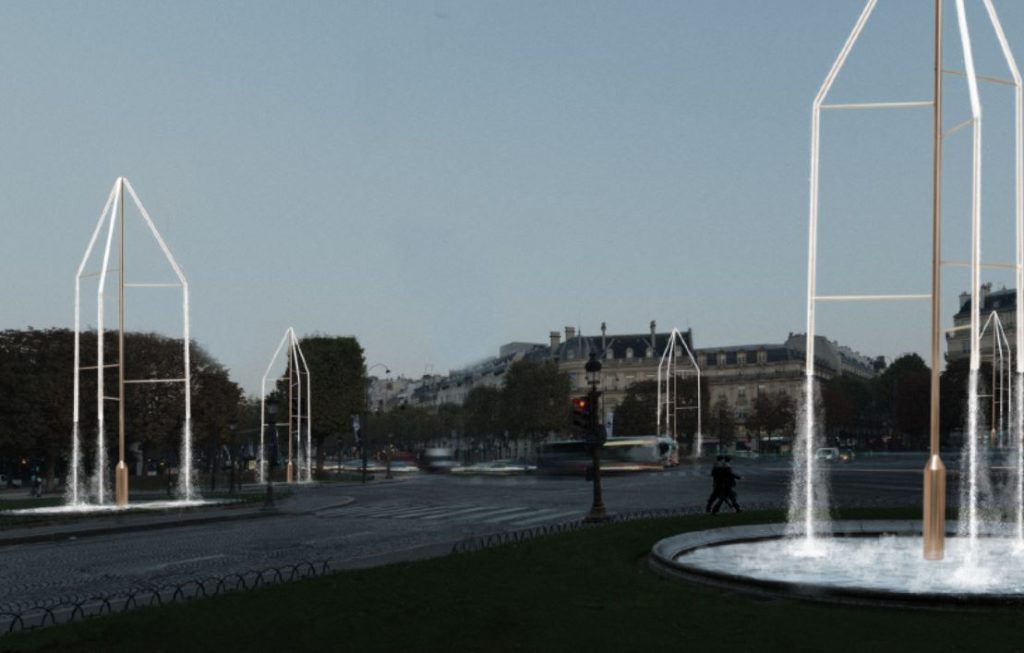
Champs-Élysées fountains renovation by Ronan&Erwan Bouroullec
Distinguished design studio Ronan & Erwan Bouroullec has teamed up with Swarovski to reimagine a historic site in central Paris. Here, the first fountain was created in 1817 to be then demolished in 1854 as it considered a disruption to traffic flow. It was replaced with six individual basins surrounding the roundabout, which were decorated with ornamental additions by master glass-maker René Lalique. More robust designs of Max Ingrand outplaced the fragile glass details in 1958 but forty years later the advanced state of deterioration of these pieces nevertheless led to the overall shutdown of the fountains.

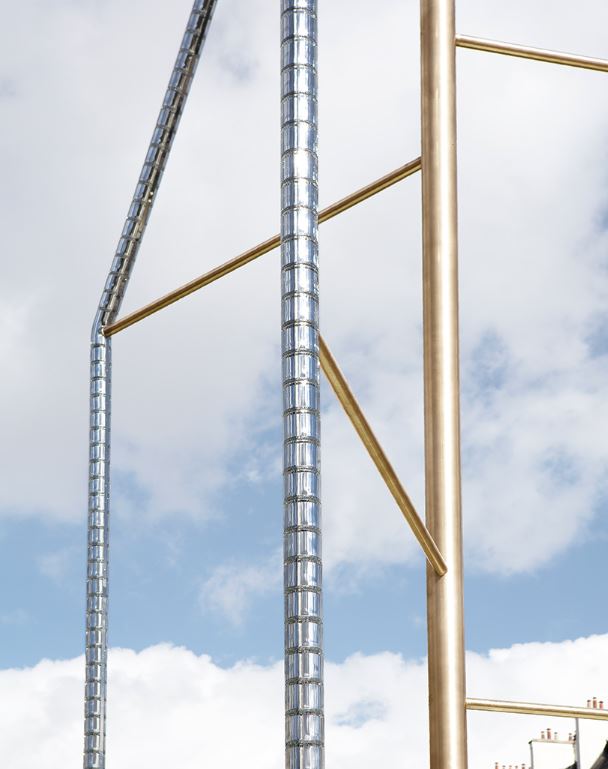
Champs-Élysées fountains renovation by Ronan&Erwan Bouroullec
Designed to align with the surrounding trees, the new fountains by the Bouroullec brothers comprise a central bronze mast on which suspended branches support an ensemble of Swarowski crystal chains. The patented custom-made crystal was developed by Swarowski engineered specially for outdoor use in an urban environment – the material is shock-resistant, 30% lighter than standard crystal, and capable of integrating water and light.
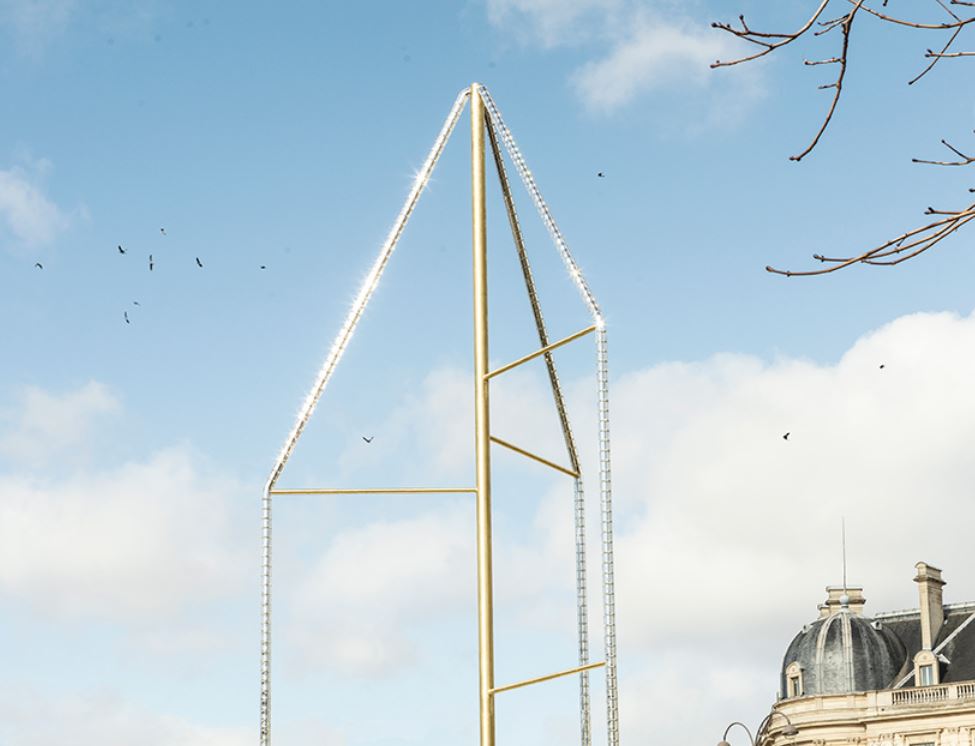

Champs-Élysées fountains renovation by Ronan&Erwan Bouroullec
The water rises through the mast, before descending through the crystal to fall into the basin along the last four meters of the fountain. Each of the six structures rotates slowly, creating a delicate choreography of light and water.
All in all, the restoration project involved more than 250 people from 40 workshops and companies.
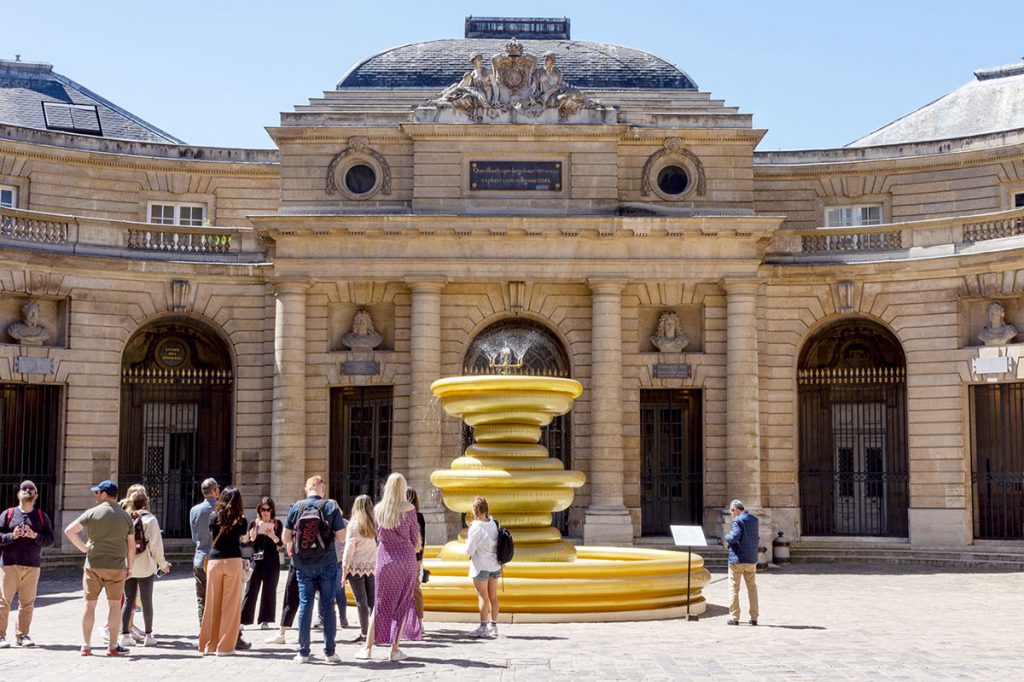
Inflatable Wishing Fountain by Inflatable Wishing Fountain
French artist Bina Baitel had carte blanche to design an inflatable wishing fountain in the historical Cour d’Honneur of Monnaie de Paris to complement the Currencies & Wonders exhibition in September 2022.

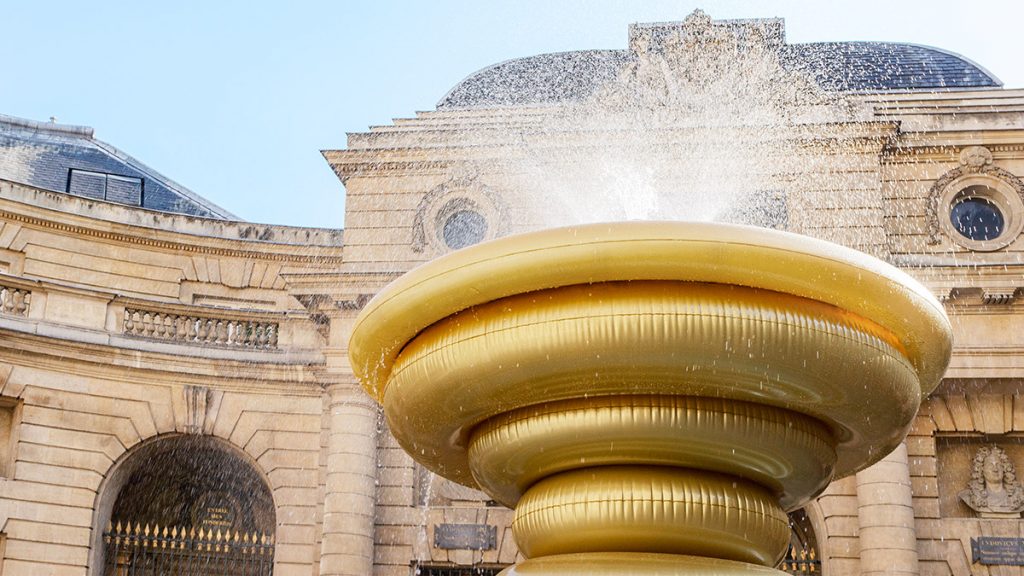
Inflatable Wishing Fountain by Inflatable Wishing Fountain
As its name suggests, the Inflatable Wishing Fountain invites visitors to resuscitate popular beliefs by throwing a coin into the fountain to attract good fortune. The work’s golden hue also echoes the colors of the metal coins are produced from.
On the one hand, the monumental installation pays homage to the original Roman fountains as well as to the classical building, which houses the collections of the Monnaie de Paris. On the other hand, the design takes cues from the paddling pool, a familiar household object since the middle of the 20th century, which was the result of technological progress and the development of plastics.
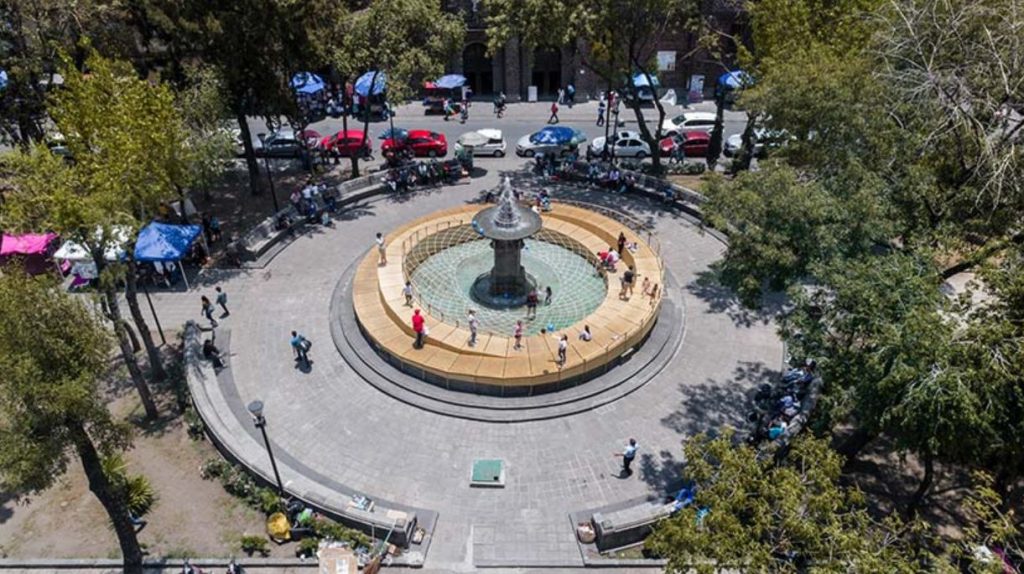
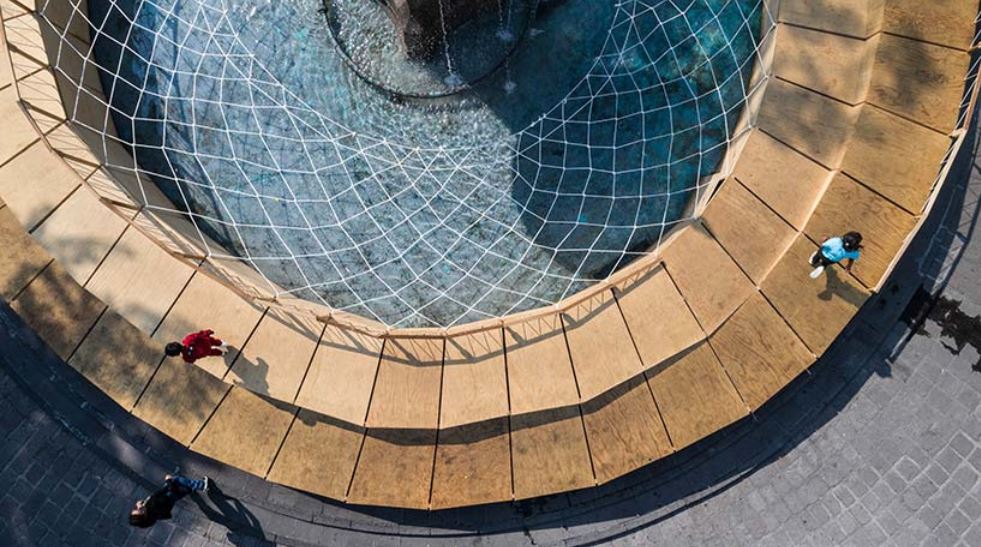
Aros by PALMA (also header image)
Local studio PALMA has brought new life into a historic fountain in in Loreto square of Mexico City with its winning proposal for the ‘Urban Toys’ competition, commissioned by Laboratorio para la ciudad and the Mexico City government with the objective of ‘developing a sort of temporary playground in the historical center of the city.’ The young designers have proposed to turn the fountain into a playground inviting pedestrians to lounge in the sun and jump in the water.
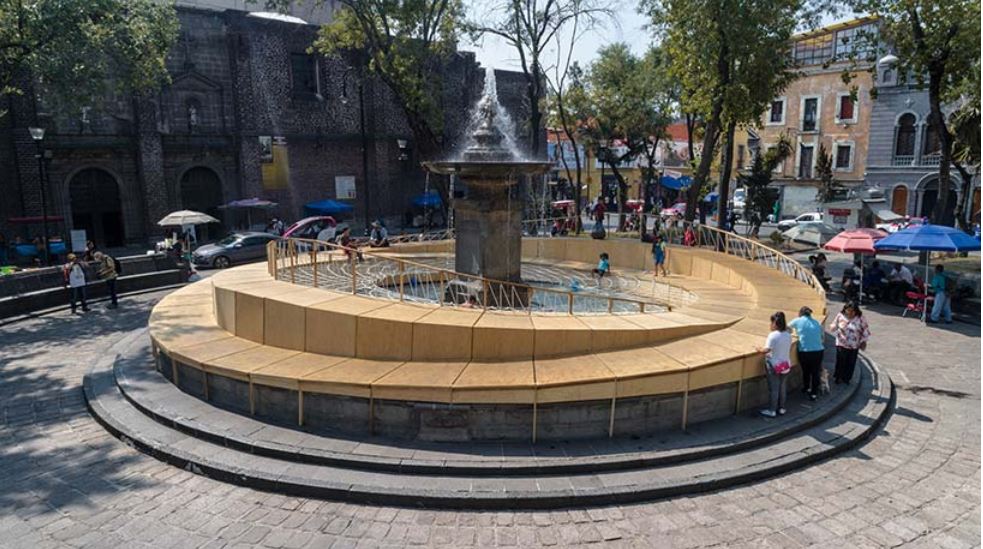
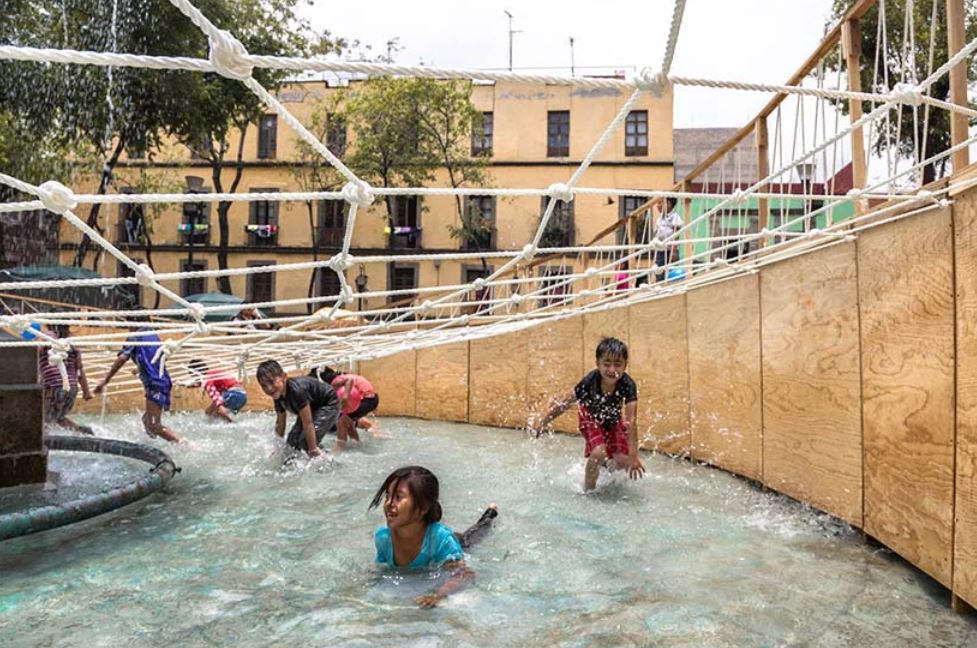
Aros by PALMA
The design is built with different types of play in mind. It consists of two circular plywood structure that envelope the central concrete pool of water. A web of ropes stretches from the interior plywood panels, serving as a kind of creative transition into the fountain and producing moments of moderate risk, which encourage interaction and dynamic play for both adults and kids.